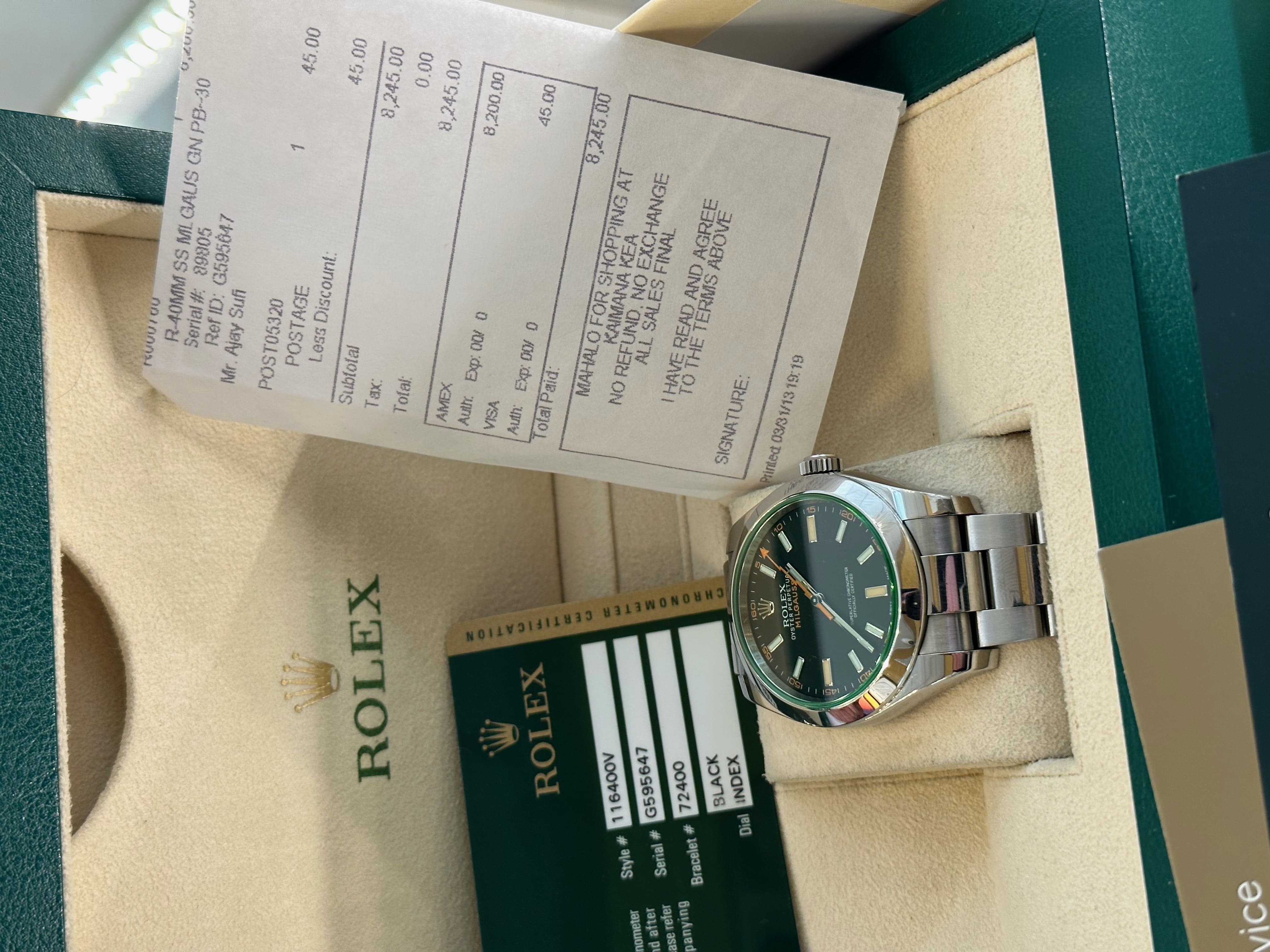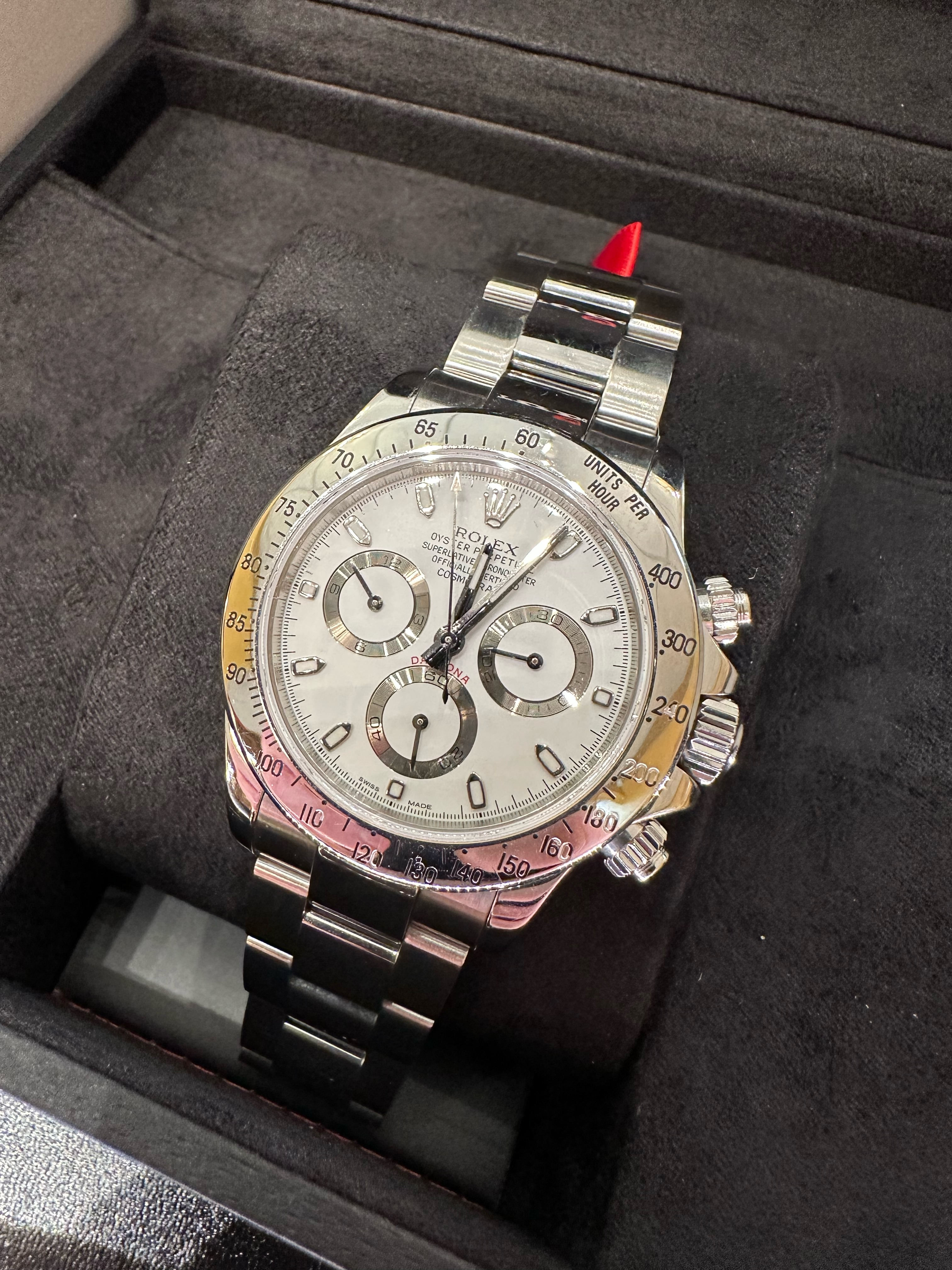Rolex Oyster Watch Repair
Rolex Oyster Watch
Founded in London in 1905 by the Bavarian Hans Wilsdorf and his English Brother in Law William Davis as Wilsdorf & Davis; it began life as nothing more than one of hundreds of small importers buying movements, cases & dials and assembling them into finished watches. Wilsdorf’s great breakthrough was deciding to specialize in wristwatches after 4 or 5 years of getting nowhere fast in making his company stand out from all the others.
Just prior to the outbreak of WW 1, Wilsdorf sent one of his watches for testing by one of the Swiss observatories, no one had ever attempted this before and his faith was rewarded with the issuing of the world’s first timing certificate for a wristwatch. The following year, 1915, he submitted a watch for the famed “Kew A” test; then as now, the world’s toughest timing test; 45 days later the certificate was in his hand; Rolex wristwatches had proved themselves as accurate as the world’s finest pocket watches; and just in time. World War One turned out to be the market opportunity Rolex had been waiting for, officers found that a wristwatch was so much easier to use than a pocket watch in the trenches. Whilst almost all previous Rolex watches had been made for ladies (including the two watches sent for testing) now Rolex produced mainly watches in the 13 line size specifically for men.

By the end of the war, wristwatches were an accepted part of a man’s accoutrements and no longer seen as solely for the ladies.
Wilsdorf, who has never been given the credit he deserves as one of the 20th century’s greatest marketers, realized that the problem with wristwatches was that being much smaller than pocket watches they were more susceptible to dust & other objects entering the case. He had experimented with screw back & front cases during WWI but he realised the problem still remained the winding button and as long as that was not hermetically sealed watches would still have difficulties. When he saw the patent for the screw down crown first proposed by Perret & Perregaux, he knew his difficulties were at an end. He bought all rights to the patent and the first “Oyster” watch was introduced in late 1926.
Now he had a product that sharply differentiated his company from all others and he was determined to promote it in the best way he could.
Mercedes Gleitze was the first English woman to swim the English Channel; however there was some controversy over her swim and so she offered to do it again in the full light of publicity. Recognizing the value this would have, Wilsdorf offered a new Rolex Oyster watch to Miss Gleitze. She then wore the watch on her successful “confirmation” swim and a month later Wilsdorf launched the watch in the UK with a full page advertisement on the front cover of the Daily Mail, the first time a watch company had ever done this. Wilsdorf had now bought out his erstwhile partner and had entered into a joint shareholding with the Aegler family of Bienne whose movements Rolex now used exclusively. There was just one small problem with the Oyster, people had to unscrew the winding button each day in order to wind it. There were two side effects of this; sooner or later the customers would forget to screw the winder tightly again and then get water in the watch and in time the gaskets or the threads would wear out and the same result would happen.
The answer to this was found in 1931, when Emile Borer, son in law of the Aegler family and head of R&D at the Rolex Bienne factory patented the perpetual winding mechanism. Now the winder was no longer needed, except for the occasional adjustment of time, and the watch remained waterproof for much longer. The next major invention from Rolex was the addition of a date window at 3 o’clock; this was introduced in 1945 and with it came a new model name, the Datejust. Now over 55 years later the Datejust is still in production and is probably the most recognized watch in the world.
Over the next 20 years Rolex introduced a number of major new watches, the Submariner (the world’s first diving watch); the Day-Date (otherwise known as the President); the Explorer (an extra tough watch made for sportsmen) and the GMT Master (the world’s first dual timezone watch). Interestingly every one of these watches has been copied by other watch firms, to say nothing of the legions of fakes of varying quality.
With the introduction of the Cosmograph Perpetual in 1988 and the Yachmaster in early 1990 Rolex has continued its tradition of innovation and conservatism. Rolex has never followed the market, rather it has always led and its leadership has been confirmed not only by the market but also by a panel of the leaders of the Watch Business, who voted the Rolex Oyster “The Watch of the Century”.







